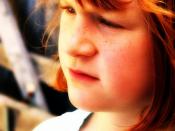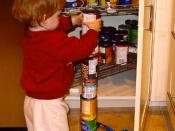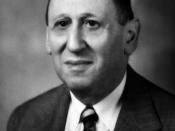What's it like to be Autistic?Tell me teacher...
Can you catch a rainbow in a piece of ice?Catch light refraction between your fingers?Map the acoustics of every type of plastic, metal and glass?Know the 'voices' of every electrical appliance by its make?Ever seen the mathematical variation of patternsOf a flicked piece of string? (2004, p. 24)In the poem entitled Teacher above, Donna Williams is expressing how diverse and peculiar traits of Autism can be, especially sensory processing issues as well as striving for understanding from her educators. Many adolescents and adults having an Autistic Spectrum Disorder (ASD) whom have written biographies of their lives describe their experiences in living with Autism along the path of sensory processing issues whether it be having an oversensitivity or undersensitivity to things or experiencing some type of integration problem. Being Autistic anywhere on the spectrum implies having a myriad of symptoms affecting sensory processing, communication, social relationships and imagination as stated by Gould and Wing (1979) and Hoy (2007) among others.
This paper intends to explore the differences of ASD symptoms through evaluating what are considered the core impairments and assessing the weight and severity of sensory processing issues through the eyes of people with ASD and how it ranks as a core deficit.
Clinically, Autism was initially originated individually by Leo Kanner (1943)and Hans Asperger (Frith, 2003) respectively in the 1940's. From there came Kanner's early development of his concept "infantile autism". (Fitzgerald and Lyons, 2007, p.2022) Both physicians commented on similar features their samples of children had including idiosyncratic bizarre fascinations, obsessively enjoying routines, poor eye contact, social retreat, distinct opposition to change and having isolated special interests. (Happe, 1999, p.11)In 1979, Gould and Wing suggested there was a way to explain Autism in a broader mode naming three categories of impairments...



Thanks
wow I was just researching this same topic in health class last month great job!!
1 out of 2 people found this comment useful.